Table of contents
What are the Celtic gods?
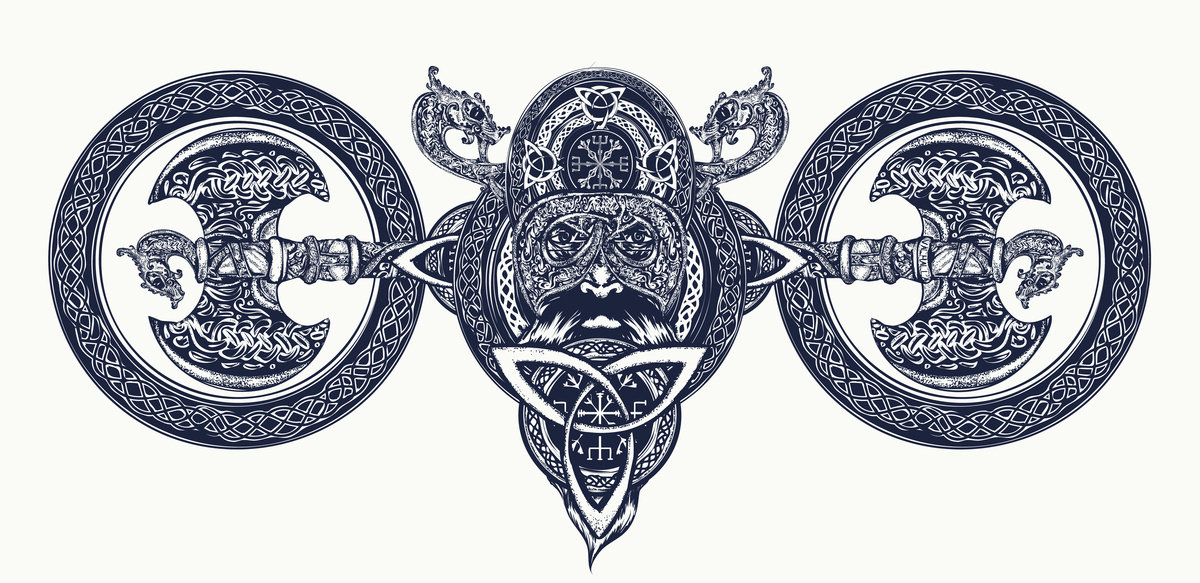
The Celtic gods are a set of deities that are part of Celtic polytheism, a religion practiced by Celtic peoples in the Bronze Age. Celtic peoples comprise a range of peoples who inhabited the western and northern parts of Europe, encompassing regions of present-day northern France, the British Isles, Portugal, and Spain.
The religion practiced by the Celts is often called Druidism. These peoples had the height of their culture in the 4th century B.C. Because they were diverse peoples, each region has a set of distinct divinities, called pantheons.
As Christianity advanced, much of this rich mythology was forgotten. Of the material that has survived, there are accounts found in literary sources and legends and myths that are perpetuated to this day. In this article, we will discuss Celtic gods that have survived time. You will learn about their stories, origins, sources, and how some of their worship has survived in neo-pagan religions such as Wicca.
The Celtic religion, druids, symbols and sacred space

Celtic religion is associated with the Druids and legends involving mythical beings such as fairies. Practiced in sacred spaces in woods, it was rich in myths and symbols, as we will show below.
Celtic Mythology
Celtic Mythology is one of the most fascinating in Europe. It developed mainly in the Iron Age and contains accounts of the religion practiced by the Celtic peoples.
It has survived the ages through indigenous texts, authors of classical antiquity such as Julius Caesar, archaeological remains, as well as legends perpetuated in oral traditions and studies of the languages spoken by these peoples.
Therefore, it is basically divided into Continental Celtic mythology and Insular Celtic mythology, the latter encompassing the myths of the countries of the British Isles such as Ireland, Wales and Scotland. Although there have been different Celtic peoples, their gods have common characteristics.
The Druids of Celtic mythology
Druids were leaders who belonged to the priestly class of the Celtic religion. They have a priestly function in countries such as Ireland and a prophetic function, as is the case with the Druids of Wales. Some of them also acted as bards.
Being gifted with knowledge about life and ancient religion, they were healers and intellectuals of the time, thus possessing a position of prestige among the Celts. They are considered legendary figures and are therefore part of the popular imagination and feature in fantasy series, movies and books, such as Outlander, Dungeons & Dragons and the game World of Warcraft.
The Symbols of Celtic Mythology
Celtic Mythology is rich in symbols. Among them, the following stand out:
1) The Celtic Tree of Life, linked to the god Lugus;
2) The Celtic Cross, with all arms equal, in modern paganism represents balance of the four elements;
3) The Celtic knot or Dara knot, used as ornamentation;
4) The letter Ailm, the sixteenth letter of the Ogham alphabet;
5) The Triquetra, symbol used in Neopaganism to indicate the Triple Goddess;
6) The triskelion, also called triscele, symbol of protection;
7) The Harp, used by gods and bards and national symbol of Ireland;
8) The Brigit Cross, made to bring protection and the blessings of the goddess Brigit on her day.
Alban Arthan, the White Mistletoe
Alban Artha is a festival of modern Druidism that occurs on the winter solstice, approximately December 21 in the Northern Hemisphere. According to tradition, the Druids were to gather under the oldest oak tree in the region that was covered in White Mistletoe, a parasitic plant associated with Christmas.
At this meeting, the chief druid would cut with a golden sickle the white mistletoe over the ancient oak tree and the other druids would have to pick up the little white balls present in this invading plant before they touched the ground.
This is why the White Mistletoe has become a symbol of Celtic mythology, as it is also associated with the death of the King of Holm in Neopaganism.
Nemeton, the Celtic sacred space
Nemeton was the sacred space of the Celtic religion. It was situated in nature, since the Celts practiced their rituals in sacred groves. Little is known about this place, but there is archaeological evidence that gives clues to where it would be.
Among the possible locations are the region of Galicia on the Iberian Peninsula, northern Scotland and even central Turkey. Its name is also associated with the Nemetes tribe that lived in the region of Lake Constance, now Germany, and their god Nemetona.
The Celtic Gods in Continental Celtic Mythology
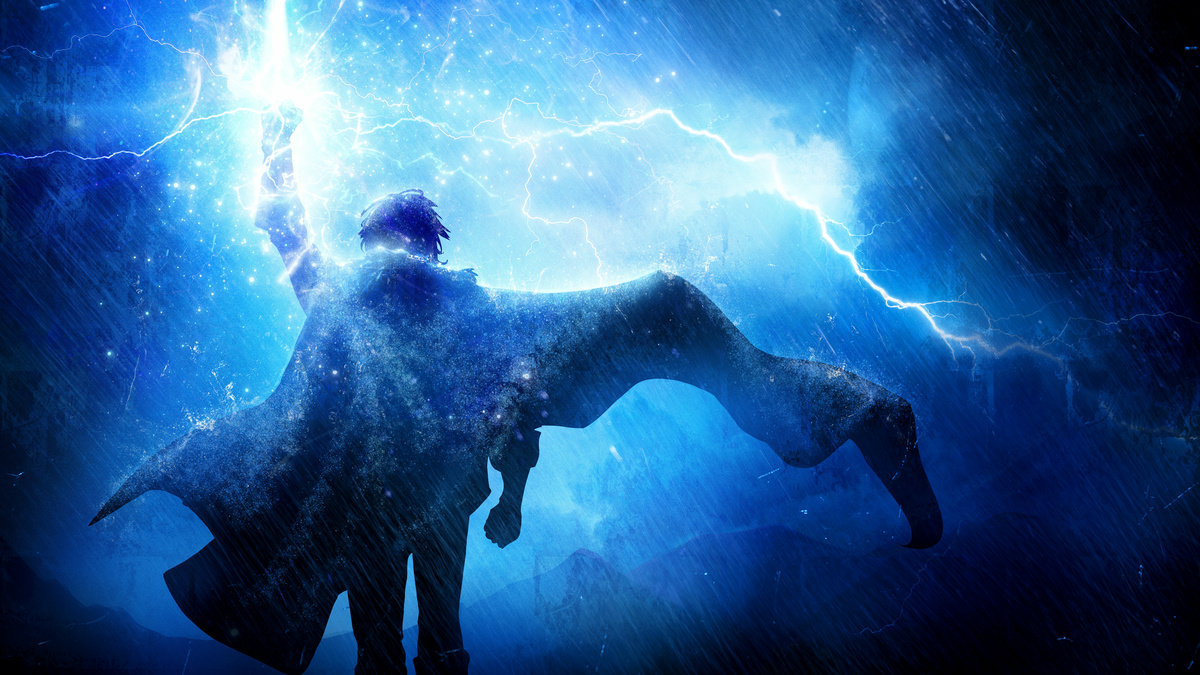
Because they occupied different areas of the European continent, the Celtic peoples are classified according to their origin. In this section, you will learn about their main deities from Continental Mythology.
Continental Celtic Mythology
Continental Celtic Mythology is that which developed in the northwestern region of the European continent, encompassing areas such as Lusitania, now Portugal, and areas encompassing the territories of countries such as Spain, France, Italy and the westernmost portion Germany.
Being mainly part of the European continent, these gods are more easily identified by other deities from other pantheons, as we will show below.
Sucellus, god of agriculture
Sucellus is a god widely worshiped by the Celts. He was the god of agriculture, forests and alcoholic beverages, from the region of the Roman province of Lusitania, region of today's Portugal and so his statues were found mainly in this region.
His name means "the good striker" and he was represented carrying a hammer and an olla, a kind of small vessel used for libation, and was accompanied by a dog. These symbols also gave him the power of protection and of food to feed his followers.
Her consort was a water goddess, Nantosuelta, associated with fertility and the home, and her Irish and Roman equivalents are, respectively, Dagda and Silvanus.
Taranis, God of Thunder
Taranis is the god of thunder, worshipped mainly in Gaul, Brittany, Ireland, and the riverside regions of the Rhineland (now western Germany) and Danube.
Together with the gods Esus and Toutatis, he integrates a divine triad. He is commonly represented as a bearded man, carrying a thunderbolt in one hand and a wheel in the other. Taranis is also associated with the Cyclops Brontes, the bearer of thunder in Greek mythology and, in religious syncretism, he is Jupiter of the Romans.
Cernunnos, God of animals and crops
Cernunnos is the god of animals and crops. Depicted with deer antlers, sitting cross-legged, he holds or uses a torque and a bag of coins or grain. His symbols are deer, horned serpents, dogs, rat bulls, and the cornucopia, representing his connection with abundance and fertility.
In Neopaganism, Cernunnos is one of the deities worshipped as the god of the hunt and the Sun. In Wicca, modern witchcraft, he represents the Cornish God of the Sun, consort of the Great Mother Goddess, symbolized by the Moon.
Dea Matrona, Mother Goddess
Dea Matrona, is the goddess associated with the archetype of mother. The name Matrona means great mother and so she is interpreted as a mother goddess. From her name originated the river Marne, a tributary river of the famous Seine river in France.
The presence of this goddess is attested in statues produced for domestic use on altars and reliquaries, which present this goddess nursing, carrying fruit or even with puppies on her lap.
She is regarded as a triple goddess, for in many regions she was part of the Matronae, a set of three goddesses widespread in Northern Europe. Her name is also associated with Modron, another character in Welsh mythology.
Belenus, God of the Sun
Belenus is the sun god, also associated with healing. His cult was widespread in many areas from the British Isles, Iberian Peninsula to the Italian Peninsula. His main shrine was in Aquileia, Italy, near the border with Slovenia.
He is commonly identified as Apollo, Greek god of the sun, due to his epithet Vindonnus. Some of his images show him accompanied by a woman, whose name is often interpreted as Belisama or Beléna, a deity of light and health. Belenus is associated with horses and the wheel.
Epona, Goddess of the earth and protector of horses
Epona is the goddess of the earth and protector of horses, ponies, mules and donkeys. Her powers are related to fertility, as her representations contain pateras, cornucopias, cobs and foals. Together with her horses, she guides people's souls to the afterlife.
Her name means the 'Great Mare' and was often worshipped for being the patroness of cavalry soldiers during the Roman Empire. Epona is often associated with Demeter, as, the archaic form of the latter goddess named Demeter Erinys, also owned a mare.
The Celtic Gods and Irish Celtic Mythology
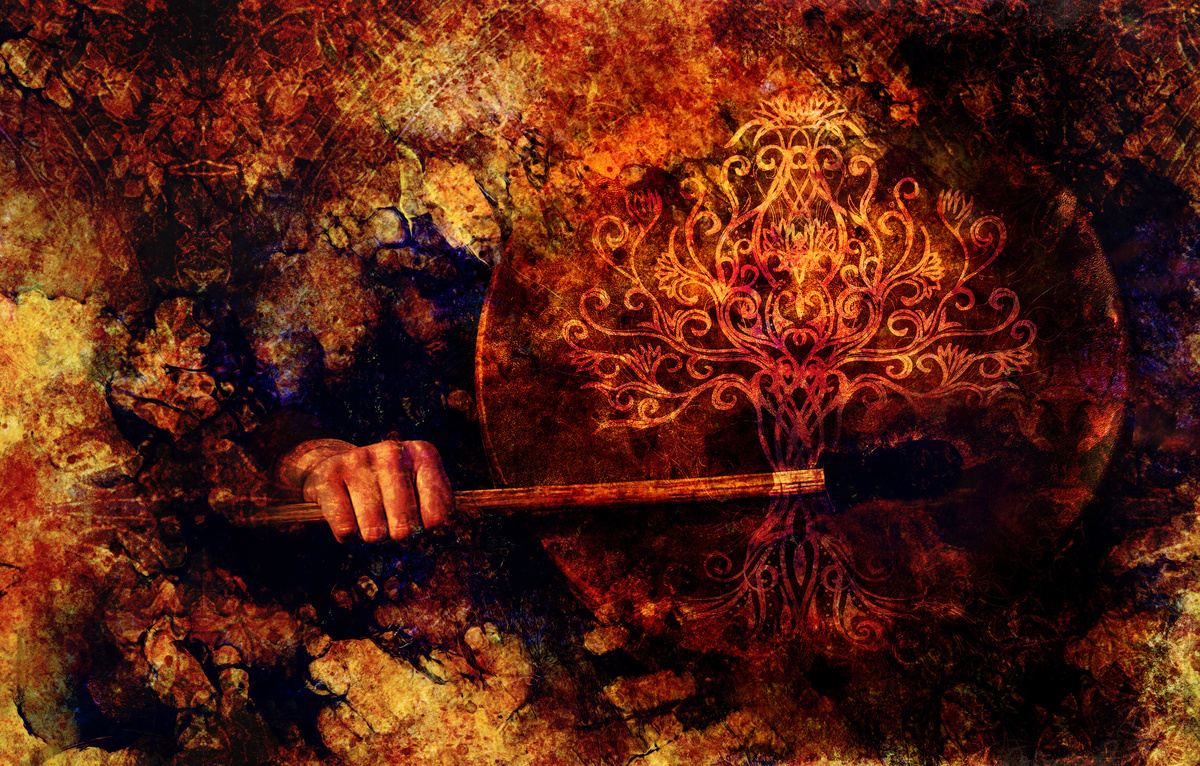
Celtic mythology of Irish origin is widely referenced around the world. It tells the story of heroes, gods, wizards, fairies and mythological beings. In this section you'll learn about its main deities, from the mighty Dagda to the idolized Brigit.
Dagda, God of magic and abundance
Dagda is the god of magic and abundance. He is seen as a king, druid and father, and is part of the Tuatha Dé Danann, a supernatural race of Irish mythology. His attributes are agriculture, virility, strength, fertility, wisdom, magic and druidism.
His power controls the weather, climate, seasons, and crops. Dagda is also the lord of life-death and is seen as a man with a long droop or even a giant, wearing a hooded cloak.
His sacred objects are a magical staff, as well as a magical harp that can control emotions and alter the seasons, and the Cauldron of Dagda, 'coire ansic', which is never empty. He is the consort of Morrígan and his children include Aengus and Brigit.
Lugh, God of smiths
Lugh is the god of blacksmiths and one of the most popular deities in Irish mythology. He is one of the Tuatha Dé Danann and is represented as a king, warrior and craftsman. His powers are linked to skill and mastery in various trades, especially blacksmithing and the arts.
Lugh is the son of Cian and Ethniu and his magic object is a spear of fire. His animal companion is the dog Failinis.
He is the god of truth and is connected to the seasonal harvest festival known as Lughnasadh, which is part of the liturgy of the Wicca religion, being a major Sabbath, celebrated on August 1 in the Northern Hemisphere and, in the case of the Southern Hemisphere, on February 2.
Morrigan, Goddess Queen
Morrigan, also known as Morrígu, is the queen goddess. Her name means great queen or even ghost queen. She is commonly associated with war and fate, primarily predicting the fate of those in battle, granting them victory or death.
She is represented by a raven, known as 'badb' and is commonly responsible for inciting victory over enemies on the battlefield and for being a guardian goddess of the territory and her people.
Morrigan is also considered a triple goddess, known as the Three Morrigans, whose names are Badb, Macha and Nemain. She also represents the archetype of a jealous wife with the power to change shape and is associated with the figure of the banshee, a female spirit who serves as a herald of death.
Brigit, Goddess of fertility and fire
Brigit is the goddess of fertility and fire. Her name in Old Irish means "the exalted one" and she is one of the Tuatha Dé Danann, daughter of Dagda and wife of Bres, the king of the Tuatha and with whom she had a son named Ruadán.
She is a very popular deity due to her association with healing, wisdom, protection, blacksmithing, purification and domestic animals. When Christianity was introduced to Ireland, the cult of Brigit was resisted and so her cult underwent syncretism, originating St Bridget.
Brigit is a central figure of Neopaganism and her day is celebrated on February 1 in the Northern Hemisphere, the time when the first spring flowers begin to appear during the thaw.
Finn Maccool, Giant God
Finn McCool is a mythical warrior and hunter who is present in the mythology of Ireland Scotland and the Isle of Man. He is also known as Fionn mac Cumhaill and his stories are narrated by his son, the poet Oisín in the Fenian Cycle.
In his myth, he is the son of Cumhall, leader of the Fianna and Muirne. The story goes that Cumhall needed to kidnap Muirne to marry her because her father denied his hand. Cumhall then asked for intervention from King Conn who banished him from his kingdom.
Then came the Battle of Cnucha, in which Cumhall battled King Conn, but was eventually killed by Goll mac Morna, who took over the leadership of Fianna.
Cuchulainn, The Warrior
Cuchulainn is an Irish demigod, who figures in the Ulster Cycle stories. He is believed to be an incarnation of the god Lugh, who is also considered to be his father. Cuchulainn was once named Sétana, but changed his name after killing Culann's guard dog as self-defense.
He is seen fighting in his chariot pulled by Láeg, his faithful coachman, and drawn by his horses Liath Macha and Dub Sainglend. His warrior skills made him famous at the age of 17 at the battle of Táin Bó Cúailnge against Ulster.
According to the prophecy, he would gain fame, but his life would be short. At the Battle of Ríastrad, he becomes an unrecognizable monster who cannot discern friend from foe.
Aine, Goddess of love
Áine is the goddess of love, agriculture and fertility who is associated with summer, wealth and sovereignty. She is represented by a red mare, linked to summer and the sun. She is the daughter of Egobail and, as goddess of love and fertility, controls the crops and animals. In other versions of her myth, she is the daughter of the sea god, Manannán mac Lir and her sacred festival is celebrated on the night of the solstice ofsummer.
In Ireland, Mount Knockainey was named after her because rituals involving the energy of fire took place there in her name. Some Irish groups such as the Eóganachta and the FitzGerald clan claim to be descendants of the goddess. At present she is called The Fairy Queen.
Badb, Goddess of War
Badb is the goddess of war. Her name means raven and this is the animal she transforms into. She is also known as the battle raven, Badb Catcha, and causes fear and confusion in the enemy combatants so that those who are under her blessings are victorious.
She usually appears as a sign that someone is going to die or simply as a shadow to indicate the slaughter and carnage that will take place. Because she appears screaming terrifyingly, she is associated with the banshees. Her sisters are Macha and Morrigan, forming a trinity of warrior goddesses, the Three Morrigna.
Bilé, Father of gods and men
Bilé is a figure considered to be the father of gods and men. According to myth, Bilé was a sacred oak tree that, when it united with the goddess Danu, dropped three giant acorns on the ground.
The first oak acorn became a man. From her came Dagda, the good god. The second gave birth to a woman, who became Brigid. Brigid and Dagda looked to each other and it fell to them to bring order to the primordial chaos and to the people of the land and the children of Danu. Bilé's role was to guide the souls of the dead druids to the Otherworld.
The Celtic Gods and Welsh Celtic Mythology
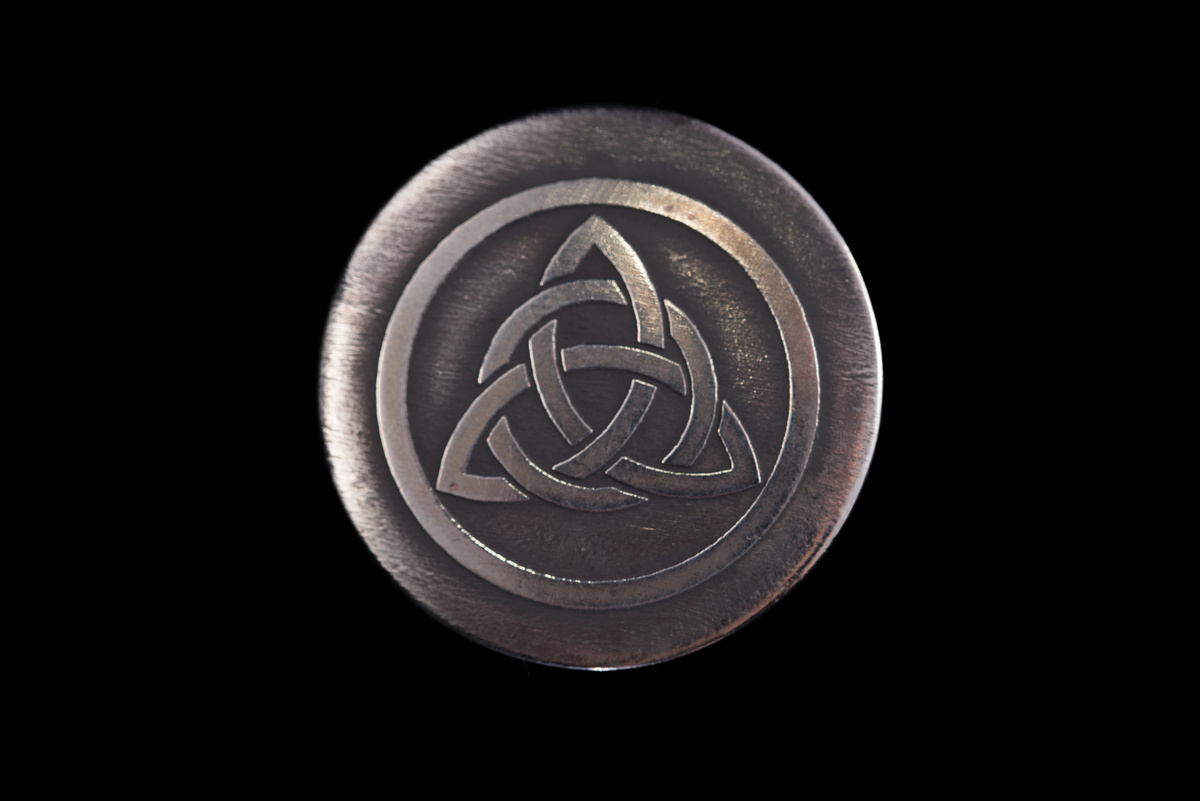
Celtic mythology of Welsh origin has its roots in Wales. Its folklore encompasses a rich oral literature, which includes part of the cycle of Arthurian legends.Check it out.
Arawn
Arawn is the ruling god of the other world, the realm of Annwn, where the souls of the dead go. According to Welsh folklore, the dogs of Annwn roam the skies during autumn, winter and early spring.
During this walk, the dogs make a noise that resembles the sounds of the hooks that migrate during this period as they are migrating spirits trying to escape the persecution that would take them to Annwn. Due to the strong influence of Christianity, the kingdom of Arawn has been equated with the hell of Christians.
Aranrot
Aranrot or Arianrhod is the daughter of Dôn and Belenos and sister of Gwydion. She is the goddess of earth and fertility, responsible for initiations. According to her myths, she had two sons, Dylan ail Don and Lleu Llaw Gyffes, to whom she gave birth through her magic.
The myth of Dylan's birth, takes place when Gwydion suggests they test his sister's virginity. To test the goddess's virginity, Math asks her to climb on her magic wand. In doing so, she gives birth to Dylan and Lleu, the latter cursed by the goddess herself. Her abode was the star castle Caer Arianrhod, whose location is in the constellation of the Northern Crown.
Atho
Atho is a Welsh deity, probably called Addhu or Arddhu. Doreen Valiente, famous English witch and author of the Book 'Encyclopedia of Witchcraft', Atho is "the dark one". He is considered a representation of the Green Man, known in English as Green Man.
One of his symbols is a trident and so he is associated with the god Mercury of Roman mythology. In some covens, modern witch groups, Athos is revered as a cornific god, being the guardian of the mysteries of magic.
Beli
Beli is a Welsh god, father of important figures in Welsh mythology such as Cassivellaunus, Arianrhod and Afallach. Consort of Dôn, he is known as Beli The Great (Beli Mawr), he is considered the oldest ancestor of the Welsh and many royal lineages originate from him.
In religious syncretism, he is mentioned as the husband of Anna, cousin of Mary, the mother of Jesus. Because of the similarity of his name, Beli is commonly associated with Belenus.
Dylan
Dylan ail Don is the second son of Arianrhod. Considered the god of the sea, he represents the darkness, while his twin brother Lleu Llaw Gyffes represents the light. His symbol is a silver fish.
According to his myth, he was murdered by his uncle and after his death, the waves beat quite violently on the beach symbolizing the desire for revenge for losing their son. To the present, the sound of the sea meeting the river Conwy in North Wales, the god's death groan.
Gwydion
Gwydion fab Dôn is a wizard and master of magic, trickster and hero of Welsh mythology who could change shape. His name means "born of the trees" and, according to Robert Graves, he is identified with the Germanic god Wōden and his stories are contained mainly in the Book of Taliesin.
In the Battle of the Trees, which chronicles the clash between the sons of Dôn and the power of Annwn, Gwydion's brother Amaethon steals a white doe and a puppy dog from Arawn, the ruler of the other world, which sets off the battle.
In this battle Gwydion uses his magical powers to join forces against Arawn and manages to form an army of trees to win the battle.
Mabon
Mabon is the son of Modron, a female figure related to the goddess Dea Matrona. He is a member of King Arthur's battle retinue and his name is related to the name of the British god named Maponos, whose meaning is "Great Son".
In Neopaganism, especially Wicca, Mabon is the name of the second harvest festival, which occurs on the day of the autumn equinox, around March 21 in the Southern Hemisphere and September 21 in the Northern Hemisphere, so it is associated with the darker half of the year and the harvest.
Manawyddan
Manawyddan is the son of Llŷr and brother of Brân the Blessed and Brânwen. His appearance in Welsh mythology makes reference to the first part of his name, which is a related form of the name of the sea god in Irish mythology, called Manannán mac Lir. This hypothesis suggests that both arose from the same common deity.
However, Manawyddan is not related to the sea, other than his father's name, Llŷr, which means sea in Welsh. He is attested in Welsh literature, particularly in the third and second parts of the Mabinogion, as well as in medieval Welsh poetry.
Rhiannon
Rhiannon is an important figure in the Welsh story collection called the Mabinogion. She is related to three mystical birds called the Birds of Rhiannon (Adar Rhiannon), whose powers awaken the dead and lull the living to sleep.
She is seen as a powerful, intelligent, beautiful and famous woman due to her wealth and generosity. Many associate her with the horse, relating her to the goddess Epona.
Her status as a goddess is rather nebulous, but experts suggest that she was part of the proto-Celtic pantheon. In popular culture, Rhiannon became known due to the song of the same name by the group FleetwoodMac, especially due to the appearance of singer Stevie Nicks in the American Horros Story series Coven.
Are there similarities between Celtic Gods and Greek Gods?
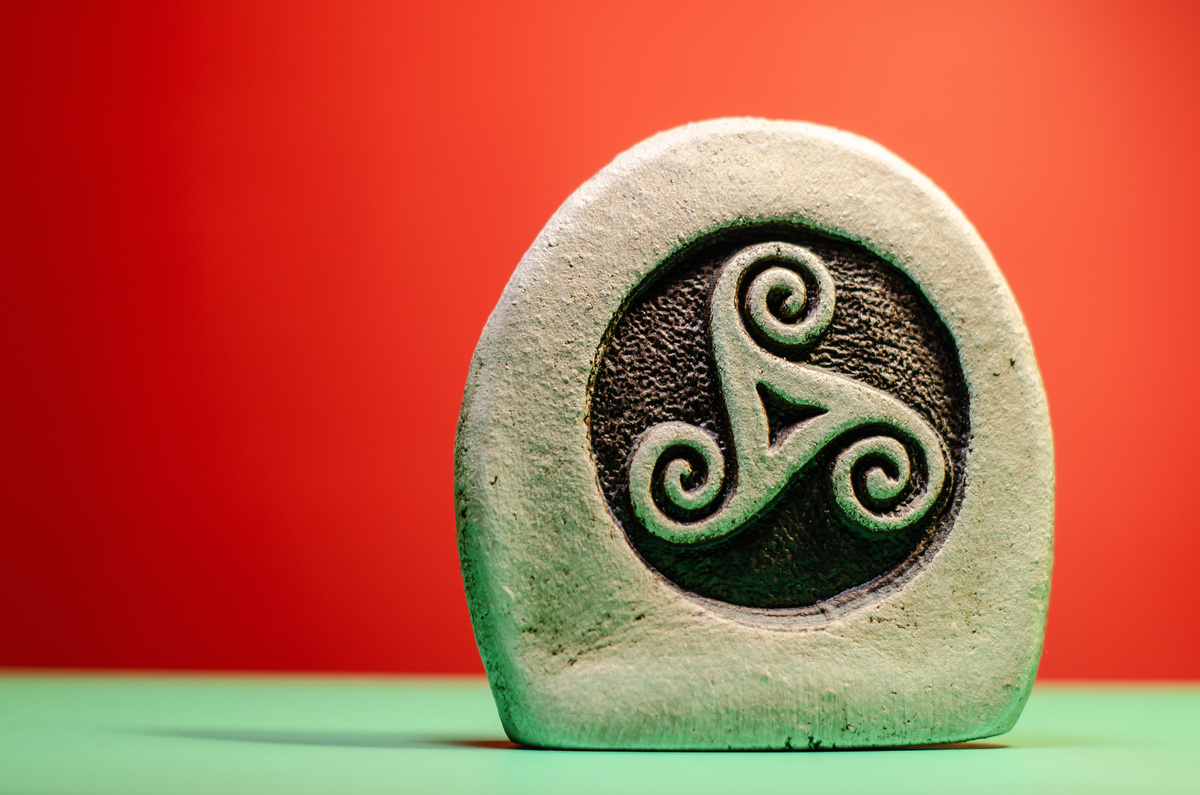
Yes, because the Celtic Gods and the Greek Gods have a common root: the Indo-European people, who originated most of the people who inhabit Europe. There are scientific hypotheses about the existence of this ancient people who practiced a religion with many gods.
For this reason, there are many similarities between the gods of European mythologies in general, for it is believed that as time passed and peoples dispersed across the continent, old gods ended up gaining new names, which were actually just epithets of ancestral gods.
Some of the correspondences have already been mentioned throughout this article, as is the case of Lugh, who is related to Apollo, and Epona who finds her correspondence with the Greek Demeter, among others. This also reveals that humanity shares many traits in common and indicates that it is possible to find the same divine essence, even through different paths.

